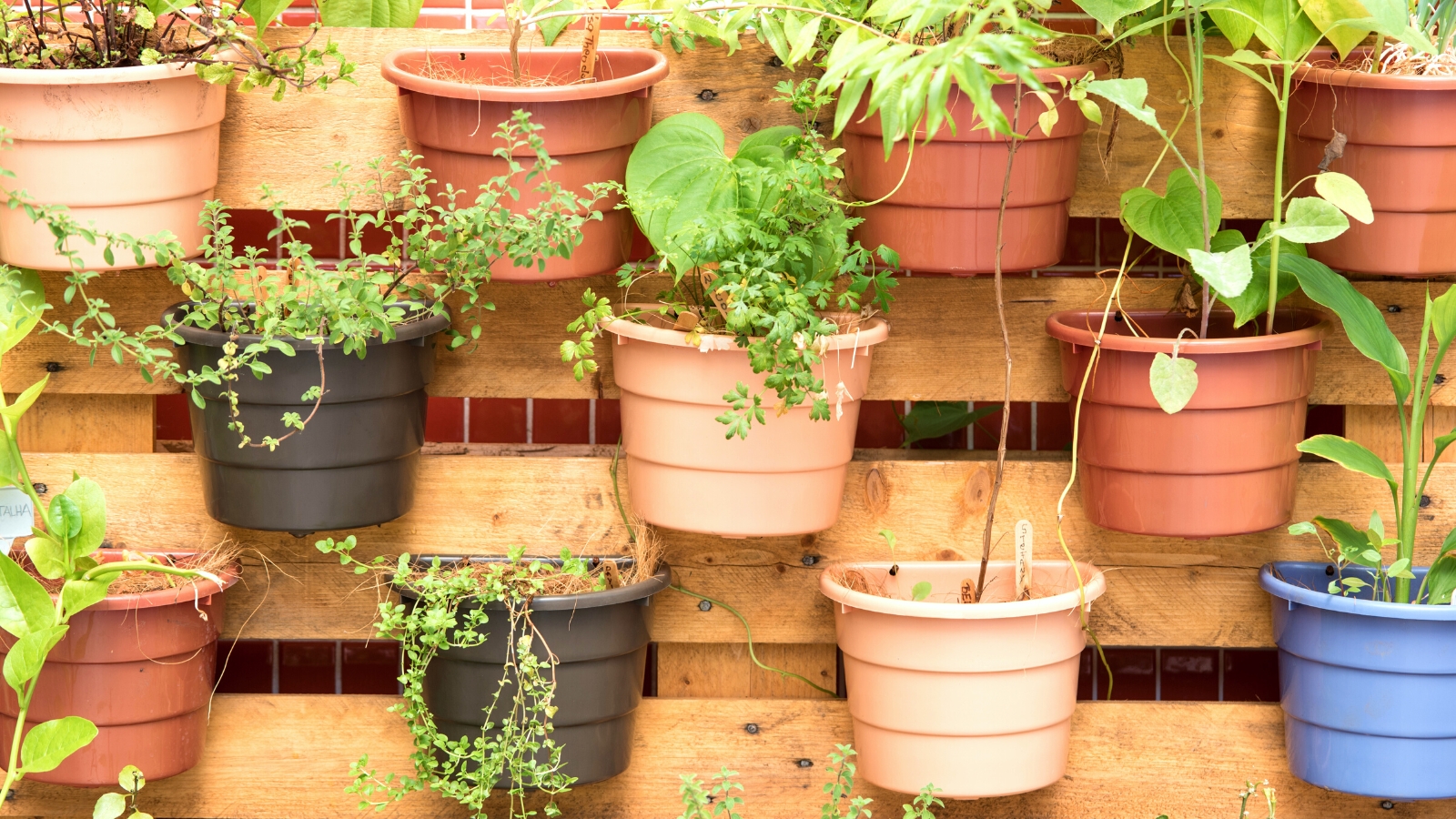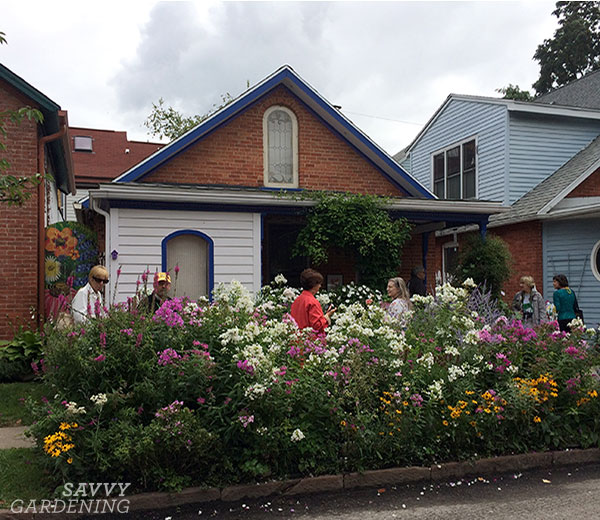Imagine a garden filled with vibrant flowers and thriving vegetables, a serene oasis that brings joy to your everyday life. Now picture this same garden, but without the hassle of endless weeding. Sounds too good to be true, right? Well, with the revolutionary concept of vertical gardening, this dream can become a reality. Vertical gardening is not only a space-saving technique, but it also minimizes the pesky problem of weeds invading your precious plants. By utilizing the vertical space in your garden, you can create an enchanting and weed-free oasis that will make your heart sing.
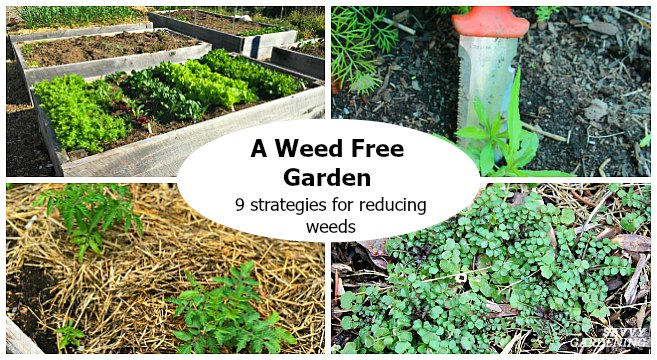
1. Understanding Vertical Gardening
Vertical gardening is a unique and innovative approach to gardening that involves growing plants vertically, instead of horizontally. It is a technique that allows you to maximize limited space, making it ideal for small gardens, balconies, or even indoor areas. By utilizing vertical structures, such as trellises, walls, or hanging baskets, you can create a beautiful and productive garden that adds greenery and beauty to any space.
1.1 What is vertical gardening?
Vertical gardening is a gardening technique that involves growing plants vertically, using various structures and techniques. Instead of traditional horizontal planting in garden beds, vertical gardening utilizes vertical space to grow plants, whether it’s on a wall, fence, or in hanging baskets. This method is particularly useful in urban areas where space is limited.
1.2 Benefits of vertical gardening
Vertical gardening offers numerous benefits that make it an attractive option for gardeners of all levels of experience. First, it allows you to maximize limited space, making it ideal for small yards or urban environments. Vertical gardening also helps to create a beautiful and aesthetically pleasing garden, as the plants grow and cascade down walls or trellises. Additionally, vertical gardening can improve air circulation around plants, reducing the risk of plant diseases. Lastly, this technique allows for easier access to plants for watering, pruning, and harvesting.
2. The Impact of Weeds on Your Garden
Weeds are an unwanted presence in any garden, and they can have a significant impact on the health and growth of your plants. Understanding the common weed problems and the negative effects they can have on your garden is essential for maintaining a thriving vertical garden.
2.1 Common weed problems in gardens
Weeds are persistent and opportunistic plants that compete with your desired plants for nutrients, water, and sunlight. Some common weeds that gardeners often encounter include dandelions, crabgrass, chickweed, and purslane. These weeds have aggressive growth habits and can quickly dominate your garden if left unchecked.
2.2 Negative effects of weeds on plant growth
Weeds can have several negative effects on the growth and health of your plants. Firstly, they compete with your desirable plants for essential resources like water, sunlight, and nutrients. This competition can lead to stunted growth and diminish the overall productivity of your vertical garden. Weeds can also serve as hosts for pests and diseases, increasing the likelihood of an infestation. Furthermore, weeds can create a messy and unkempt appearance in your garden, detracting from its beauty.
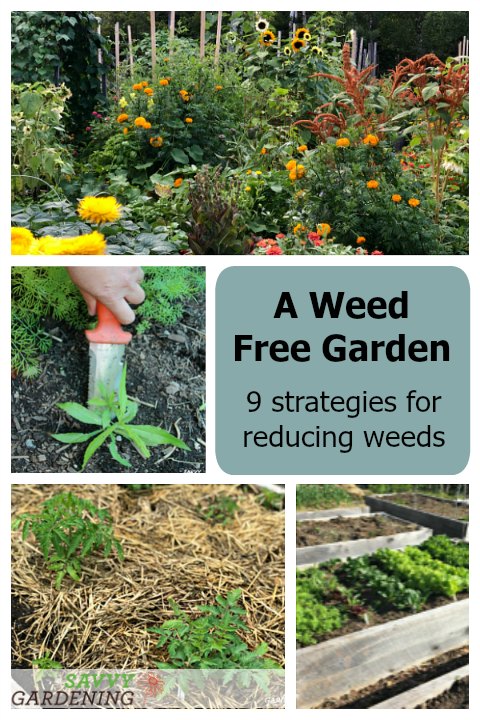
3. Strategies for Minimizing Weeds in Vertical Gardens
Preventing and controlling weeds in your vertical garden is crucial to maintaining its health and productivity. Thankfully, there are several effective strategies that you can implement to minimize the presence of weeds in your garden.
3.1 Selecting the right location for your vertical garden
Choosing the right location for your vertical garden is essential for minimizing weed problems. Select an area that receives adequate sunlight and has good air circulation. Avoid areas near mature trees or overhanging structures, as they can cast shade and hinder plant growth. Additionally, avoid areas where weeds are prevalent, as this can increase the risk of weed infestation in your vertical garden.
3.2 Using weed barriers and mulching techniques
Using weed barriers and mulching techniques can be highly effective in reducing weed growth in your vertical garden. Weed barriers can be made from landscape fabric or thick layers of newspaper or cardboard. Place these barriers underneath your planting areas to prevent weed seeds from germinating and growing. Mulching, on the other hand, involves placing a layer of organic material, such as straw, wood chips, or shredded leaves, around your plants. This helps to suppress weed growth by blocking out sunlight and conserving moisture.
3.3 Implementing proper spacing and plant selection
Proper spacing and plant selection are crucial in minimizing weed growth. Ensure that you space your plants appropriately, allowing enough room for them to grow without crowding each other. This prevents weeds from taking advantage of the gaps between plants. Additionally, choosing plants that have rapid growth and dense foliage can help smother weeds and prevent them from establishing.
3.4 Regular monitoring and maintenance
Regular monitoring and maintenance are essential to keep weeds under control in your vertical garden. Take the time to inspect your garden frequently and remove any weeds that appear. Be diligent in pulling up weeds by their roots to ensure complete removal. Regular maintenance tasks, such as watering, pruning, and fertilizing, can also help to promote the health and vigor of your plants, making them more resistant to weed competition.
4. Choosing the Right Plants to Minimize Weeds
Selecting the right plants for your vertical garden plays a crucial role in minimizing weed growth. By choosing low-maintenance plants, those with dense foliage, and implementing companion planting, you can create an environment that discourages weeds from taking hold.
4.1 Low-maintenance plants for vertical gardens
Choosing low-maintenance plants for your vertical garden can help minimize weed problems. These plants are typically robust, fast-growing, and require minimal care. Some examples of low-maintenance plants suitable for vertical gardens include herbs like basil, thyme, and rosemary, as well as annual flowers like marigolds, petunias, and zinnias. These plants thrive in various growing conditions and can effectively compete with weeds.
4.2 Plants with dense foliage for weed suppression
Plants with dense foliage are excellent choices for weed suppression in vertical gardens. Their thick growth pattern makes it difficult for weeds to establish and compete for resources. Consider incorporating plants like ferns, ivy, or creeping thyme, which have a dense foliage structure and can effectively smother weed growth.
4.3 Companion planting to deter weeds
Companion planting involves strategically planting different species together to create a mutually beneficial relationship. Some plants have natural repellent properties that help deter pests and weeds. Incorporating plants like marigolds, geraniums, or garlic around your vertical garden can help deter weeds by releasing natural deterrents or competing for resources.
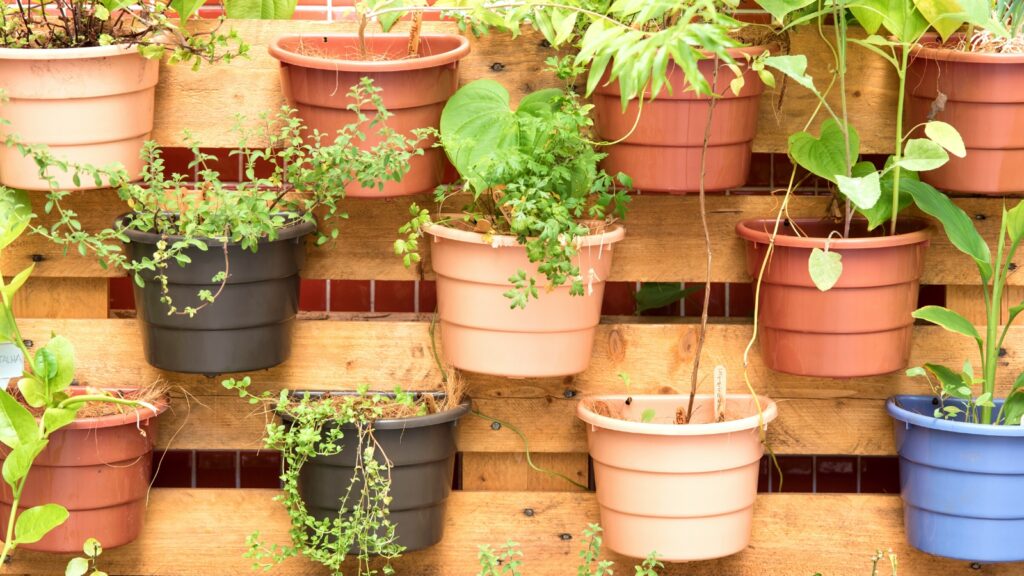
5. Weed Control Methods for Vertical Gardens
Weed control is an essential aspect of maintaining a thriving vertical garden. Understanding and implementing different weed control methods can help you keep unsightly and invasive weeds at bay.
5.1 Manual weed removal techniques
Manual weed removal techniques involve physically removing weeds by hand. This technique is most effective for smaller gardens and young or newly germinated weeds. To manually remove weeds, grasp the weed near the base and gently pull upward, making sure to remove the entire root system. Be cautious not to disturb the surrounding plants or cause damage to their roots.
5.2 Organic weed control options
Organic weed control options focus on using natural, plant-based substances or physical barriers to suppress weed growth. Mulching with organic materials, such as straw or wood chips, can prevent weed seeds from germinating and inhibit their growth. Additionally, vinegar or boiling water can be applied directly to the weeds to kill them. However, be careful when using vinegar, as it can also harm desirable plants if not applied correctly.
5.3 Chemical weed control considerations
Chemical weed control should be used as a last resort and with caution. Herbicides containing chemicals like glyphosate can effectively kill weeds, but they can also harm desirable plants if not applied correctly. If you choose to use chemical weed control, be sure to carefully follow the instructions on the product label and minimize any potential harm to the environment.
6. Designing an Efficient Vertical Garden Layout
An efficient and well-designed layout is essential for the success of your vertical garden. Proper spacing, the incorporation of trellises and support structures, and optimizing sunlight exposure are all important factors to consider when designing your vertical garden.
6.1 Proper spacing and arrangement of plants
Proper spacing and arrangement of plants ensure that each plant receives adequate space and resources to thrive. Consider the mature size of each plant and leave enough room for it to grow without overcrowding neighboring plants. This prevents weeds from taking advantage of tight spaces and reduces competition between plants.
6.2 Incorporating trellises and support structures
Incorporating trellises and support structures in your vertical garden not only provides structural support for climbing plants but also helps maximize space and minimize weed growth. Plants that naturally climb or have trailing stems can be trained up trellises or along structures, keeping them elevated and away from potential weed infestations on the ground.
6.3 Optimizing sunlight exposure for plant growth
Sunlight is a vital resource for plant growth, and optimizing sunlight exposure in your vertical garden is key. When designing your garden layout, ensure that taller plants or trellises do not overshadow shorter plants, preventing them from receiving adequate sunlight. This balance of light distribution ensures optimal plant growth and reduces the likelihood of weed establishment in shaded areas.
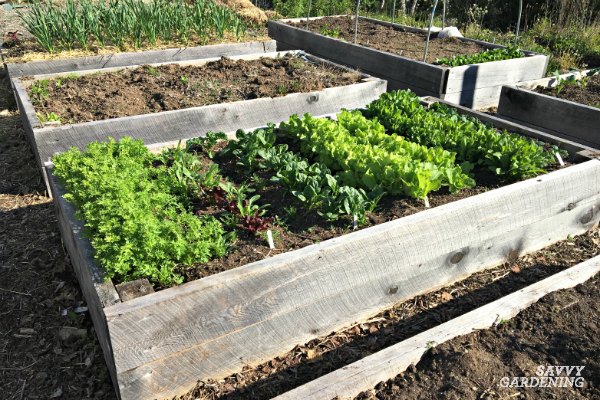
7. Maintaining a Weed-Free Vertical Garden
Regular maintenance is crucial for maintaining a weed-free vertical garden. By following proper watering and nutrient management practices, employing pruning and trimming techniques, and removing dead or dying plants in a timely manner, you can keep your vertical garden healthy and free from weeds.
7.1 Regular watering and nutrient management
Proper watering and nutrient management are essential for the overall health and vitality of your vertical garden. Provide your plants with adequate water, ensuring that the soil is moist but not waterlogged, as these conditions can encourage weed growth. Additionally, regularly fertilize your plants with organic or slow-release fertilizers to provide them with the necessary nutrients to compete with weeds.
7.2 Proper pruning and trimming techniques
Pruning and trimming your plants help maintain their shape, improve air circulation, and prevent overcrowding, which can lead to weed problems. Remove any dead or diseased plant parts promptly. Prune back vigorous or overgrown plants to prevent them from shading and suffocating other plants. These maintenance practices promote plant health and discourage weed growth.
7.3 Timely removal of dead or dying plants
Dead or dying plants provide an opportunity for weeds to establish and thrive. Regularly inspect your vertical garden for any plants that show signs of decline and promptly remove them. This prevents the weeds from utilizing the available space and resources and maintains the cleanliness and overall aesthetic of your vertical garden.
8. Beneficial Practices for Weed Prevention
Implementing beneficial practices from the beginning can help prevent weed problems in your vertical garden. Starting with weed-free soil and containers, selecting high-quality seeds or seedlings, and cleaning and sterilizing gardening tools are all important steps to ensure weed prevention.
8.1 Starting with weed-free soil and containers
Starting with weed-free soil and containers is crucial to prevent weed seeds from infiltrating your vertical garden. Use high-quality potting mix or compost that has been properly sterilized to eliminate any weed seeds or pathogens. Similarly, ensure that your containers or beds are clean and free from weed debris before planting.
8.2 Choosing high-quality seeds or seedlings
Selecting high-quality seeds or seedlings helps ensure that your plants are healthy and less susceptible to weed competition. Purchase seeds or seedlings from reputable sources to minimize the risk of introducing weed seeds or diseases into your garden. Healthy plants have a better chance of outcompeting weeds and thriving in your vertical garden.
8.3 Cleaning and sterilizing gardening tools
Clean and sterilize your gardening tools to prevent the spread of weed seeds and diseases. After each use, remove any plant debris or soil from your tools and wash them with warm, soapy water. If necessary, soak metal tools in a 10% bleach solution for 30 minutes to disinfect them. Proper tool hygiene reduces the risk of inadvertently introducing weed seeds into your vertical garden.
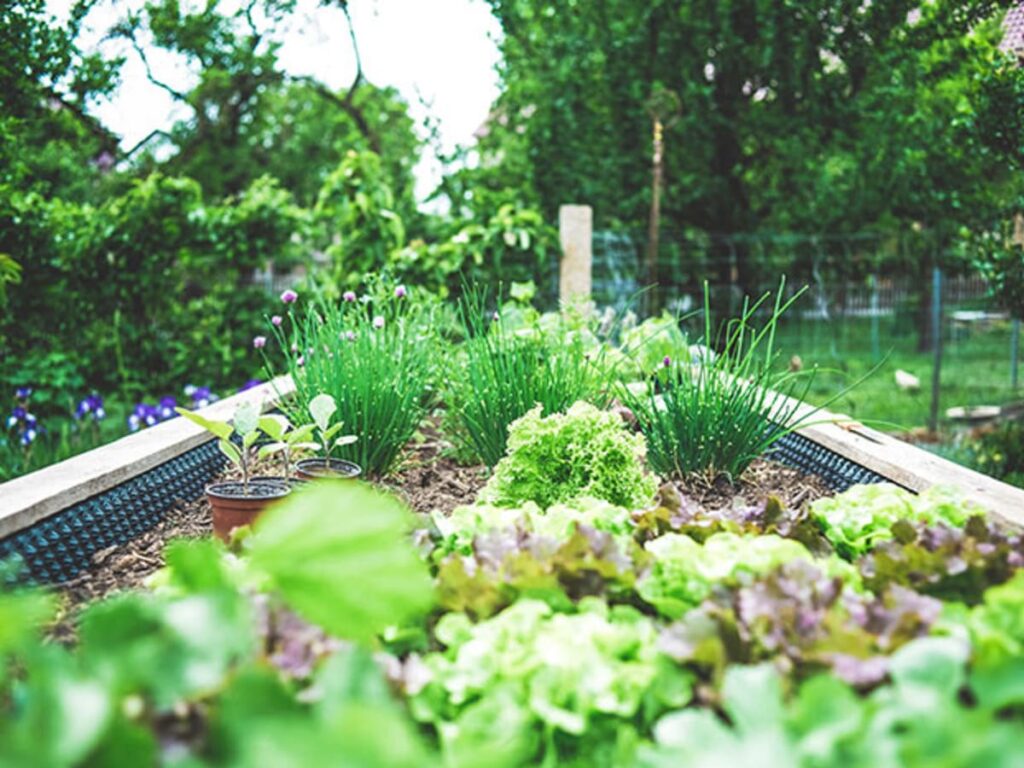
9. Integrated Pest Management in Vertical Gardens
Managing garden pests is essential for maintaining the health and productivity of your vertical garden. By implementing integrated pest management techniques, such as identifying and managing pests, utilizing natural predators and beneficial insects, and implementing physical barriers, you can effectively control pests and reduce the likelihood of weed problems.
9.1 Identifying and managing garden pests
Regularly inspect your vertical garden for signs of pest infestation. Common pests that may also contribute to weed problems include aphids, caterpillars, and snails. Identify the pests accurately and employ appropriate pest management strategies, such as handpicking, organic insecticides, or introducing natural predators.
9.2 Utilizing natural predators and beneficial insects
Utilizing natural predators and beneficial insects in your vertical garden can help control pests and prevent weed problems. For example, ladybugs prey on aphids, while lacewings consume caterpillars and other soft-bodied insects. Introducing these beneficial insects into your garden can create a balanced ecosystem, reducing the reliance on chemicals and promoting the overall health of your plants.
9.3 Implementing physical barriers for pest prevention
Implementing physical barriers, such as netting or row covers, can effectively prevent pests from accessing your plants. This barrier acts as a deterrent, preventing pests like birds, rabbits, or insects from damaging your crops and creating opportunities for weed problems. Physical barriers are particularly useful for protecting young plants or highly desired crops.
10. Troubleshooting Weed Problems in Vertical Gardens
Despite your best efforts, weed problems may still arise in your vertical garden. Recognizing signs of major weed infestation, effectively eradicating weeds, and implementing preventive strategies are key to troubleshooting and maintaining a weed-free garden.
10.1 Recognizing signs of major weed infestation
It is crucial to recognize signs of major weed infestation early on to prevent significant damage to your vertical garden. Signs may include a sudden increase in weed growth, competition for resources among plants, or declining health of desirable plants due to weed competition. Regular monitoring and prompt action are key to addressing major weed infestations before they become unmanageable.
10.2 Effective strategies for weed eradication
To effectively eradicate weeds, employ a combination of manual removal, targeted herbicide application, and preventive measures. Continuously monitor your garden and pull out weeds by their roots as soon as they appear. For larger infestations, using a suitable herbicide, following the manufacturer’s instructions, can help control weeds. However, always consider the potential impact on desirable plants and the environment when using herbicides.
10.3 Preventing weed reinfestation
Preventing weed reinfestation is crucial once you have successfully eradicated weeds from your vertical garden. Implementing preventive strategies, such as proper maintenance, regular weeding, mulching, and encouraging healthy plant growth, can help minimize the risk of weed establishment and ensure the long-term success of your garden.
In conclusion, vertical gardening is a fantastic way to make the most of limited space while enjoying the benefits of a vibrant and productive garden. By understanding the impact of weeds on your vertical garden and applying strategies for weed prevention and control, you can create a thriving and weed-free garden oasis. Remember to choose the right plants, employ suitable weed control methods, and implement effective maintenance practices to keep your vertical garden healthy, beautiful, and free from unwanted weeds.

